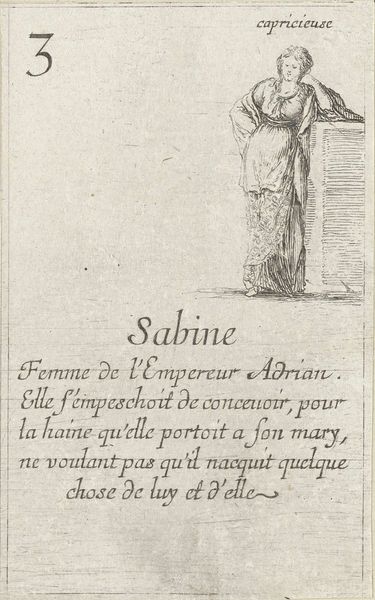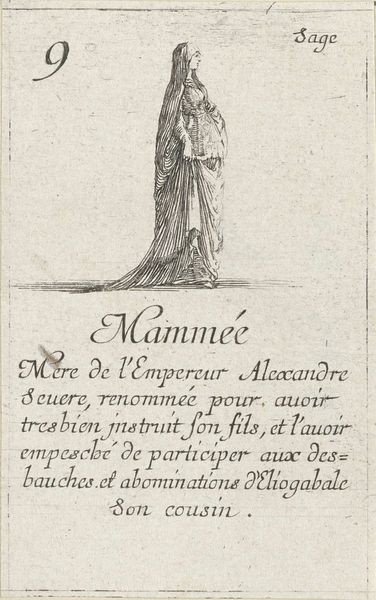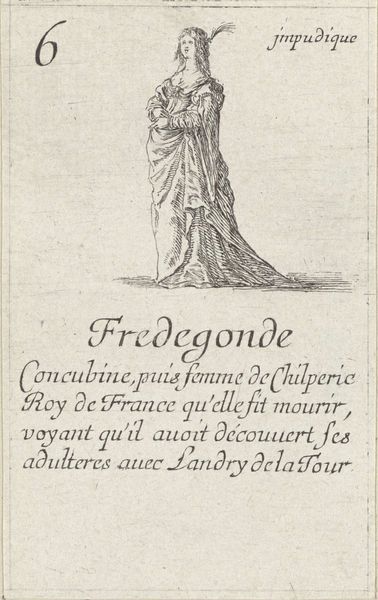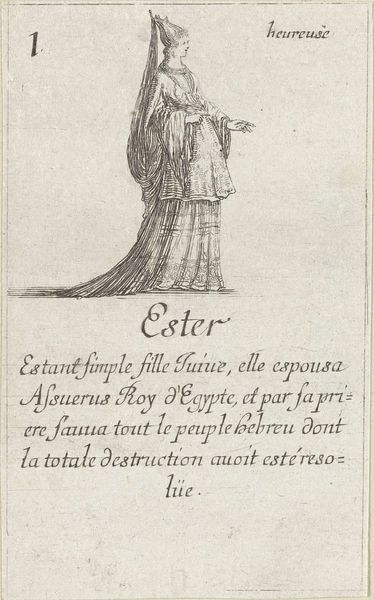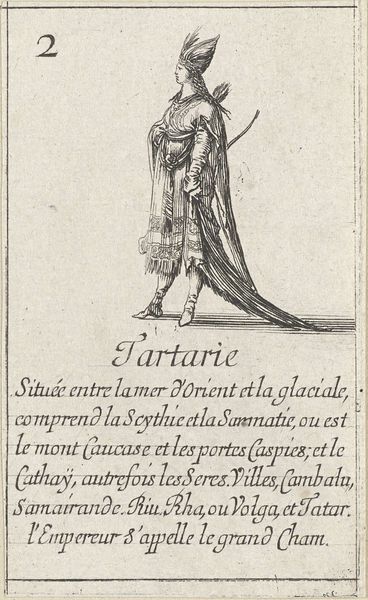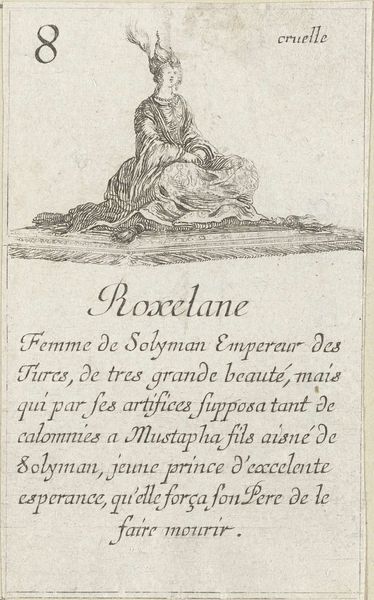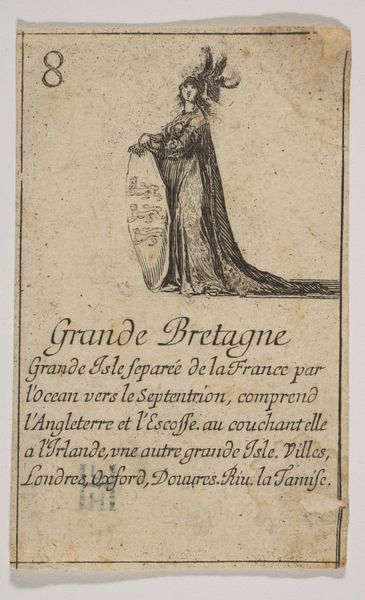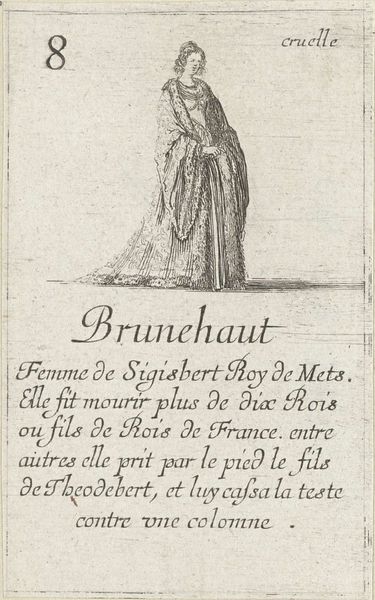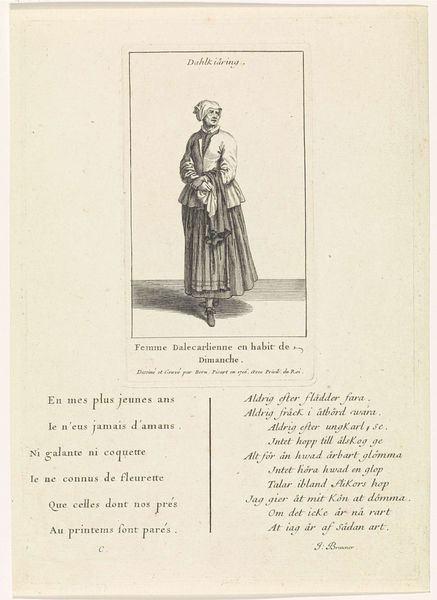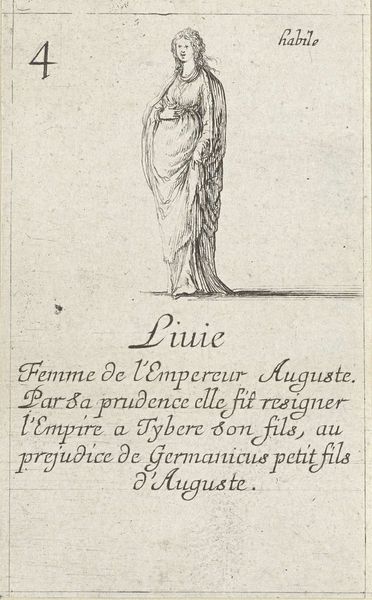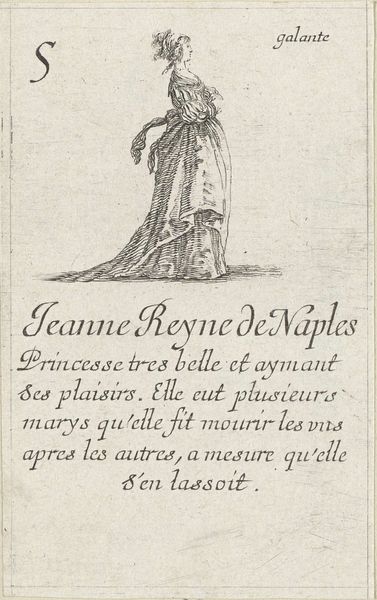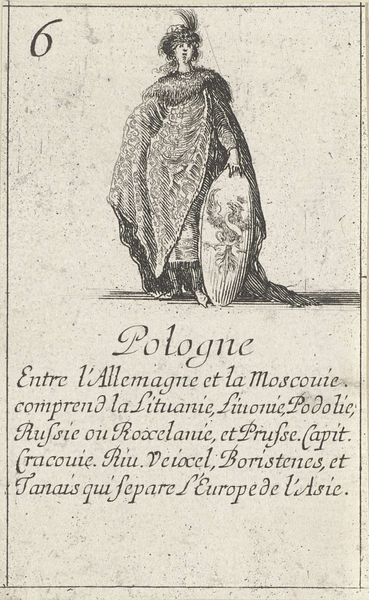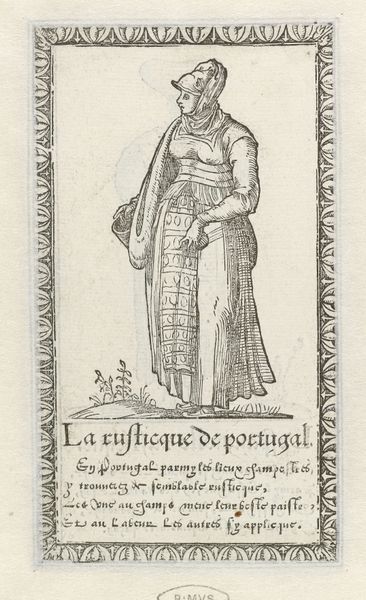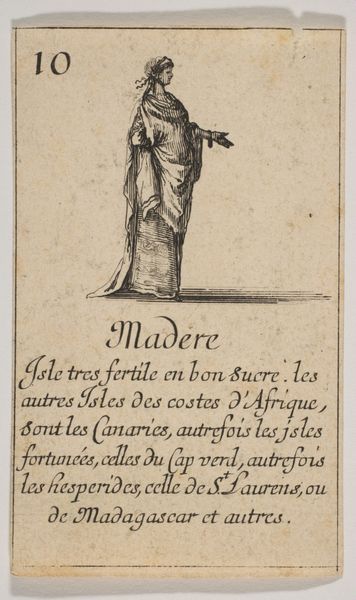
print, etching
#
portrait
#
narrative-art
#
baroque
# print
#
etching
#
figuration
#
history-painting
Dimensions: height 90 mm, width 55 mm
Copyright: Rijks Museum: Open Domain
Stefano della Bella created this print of Pompeia Plotina in the 17th century, using etching. Etching is an printmaking technique where a metal plate, often copper, is coated with a waxy, acid-resistant substance called a ground. The artist then scratches an image into the ground with a needle, exposing the metal underneath. When the plate is immersed in acid, the exposed lines are eaten away, creating an incised design. Ink is applied to the plate, filling the etched lines, and the surface is wiped clean. Finally, the plate is pressed onto paper, transferring the ink and creating a print. The quality of the line depends on the pressure applied and the varying depths that can be achieved. This skilled work allowed prints to be made in large numbers to satisfy an eager market, and to spread ideas widely. Paying attention to materials and making helps us appreciate the ingenuity of artists like Stefano della Bella.
Comments
No comments
Be the first to comment and join the conversation on the ultimate creative platform.
